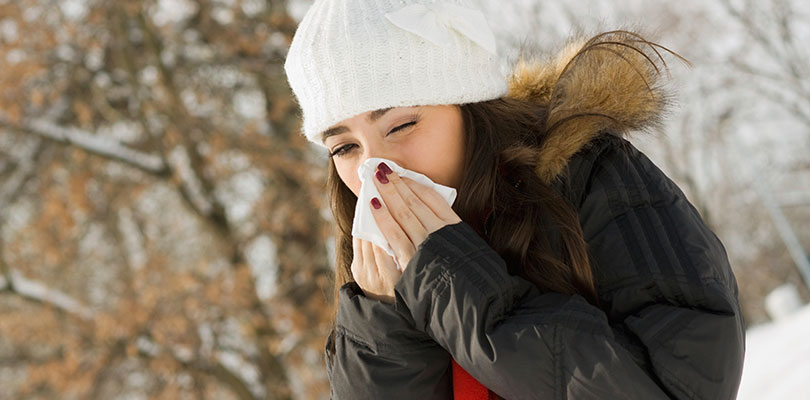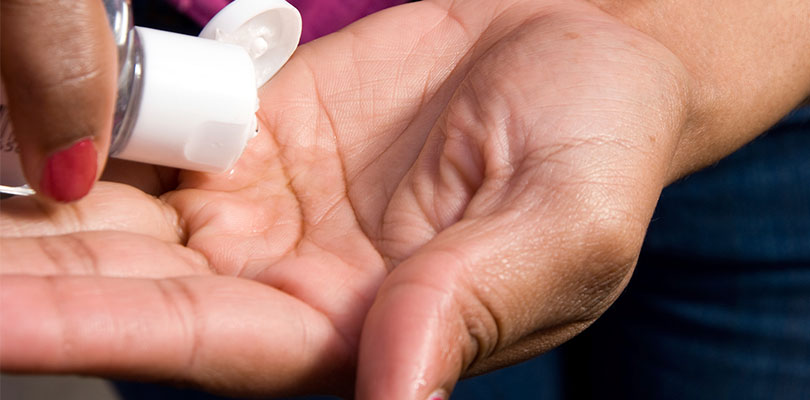
Photo Credit: BakiBG / iStockPhoto.com
Separating Truth From Fiction
Colds are resilient, but generally not too threatening. Most people will deal with the hallmark runny nose and nagging cough from time to time, and while there’s no cure for the virus, it usually loosens its grip in a week or two.
However, the common cold has spawned a wealth of stories, home-brewed remedies, and myths parading as facts that can interfere with your treatment and recovery. Do you count on natural supplements, or simply stay inside on cold, damp days to reduce your risk? Will you keep the virus to yourself by covering your mouth when you cough?
The best treatment and prevention plan isn’t always clear, but there is a way to get through the season in good health. Arm yourself with sound facts and toss aside these myths that could actually be leaving you and your family more susceptible to colds.
1. You're More Likely to Catch a Cold in Cold Weather
There seems to be a dramatic increase in the amount of viruses come winter, but if that’s the case, cold temperatures are certainly not to blame. In fact, the cold temperature appears to ignite your natural immune response, leaving your body better prepared to fight off any potential viral invaders.
The real reason behind the spike in cold viruses during cold weather? People tend to stay inside far more often, which means they’re in closer proximity to each other when there’s sneezing and coughing going on. When you’re inside, you’re also closer to surfaces and air that can easily harbor viruses and bacteria.

Photo Credit: nimu1956 / iStockPhoto.com
2. Going Into the Cold With Wet Hair or Damp Clothes Will Raise Your Risk of Infection
This is one of the most stubborn myths out there, and enough to make people avoid damp winter days altogether. While cold and wet are undoubtedly a lousy combination, this sort of weather won’t incubate and pass around cold viruses more than any other type of weather. And as it turns out, you don’t have to worry too much about stepping out with a wet head.
Studies have repeatedly shown that being wet, or being in wet weather, doesn’t increase your risk of catching a cold, but it can certainly make things feel worse. It’s quite possible that those who get sick will think back to a recent episode of wet or damp exposure and assume that was what brought on their symptoms. However, simply feeling colder will not make you sicker.

Photo Credit: lzf / iStockPhoto.com
3. The Virus Can Only Be Passed by Sneezing or Coughing
Although a sneeze is bound to launch the virus through the air, it’s not the only way the common cold gets around. True, the water droplets released from the mouth and nose are exceptionally efficient carriers, but even breathing or talking can send the troublesome particles into the air, too.
In some cases, simply touching the skin of an infected person is often enough to pass along the infection. Even more frightening is the fact that the rhinovirus can live on hard and soft surfaces for quite a while — which means public or shared spaces are the perfect settings for catching colds.

Photo Credit: Tuned_In / iStockPhoto.com
4. You're More Likely to Catch a Cold on an Airplane
The dry, recirculated air swirling around an airplane cabin is less than ideal, but that doesn’t mean you’re destined to develop a cold by the time you land. Studies have tried to unveil this link between air travel and sickness that’s so widely upheld, but the truth is, you’re no more likely to develop a cold in an airplane than you are in your normal work environment.
Whether the air is fresh or recirculated doesn’t seem to matter either, as a 2002 study published in the Journal of the American Medical Association attests. In the end, about 20 percent of passengers developed a cold after their flight, regardless of the type of air they were exposed to. While it’s difficult to completely protect against cold viruses on a plane, rest assured that your risk of contracting one is lower than you might think.

Photo Credit: robeo / iStockPhoto.com
5. Sanitizer Is Just as Good as Soap
Hand sanitizer is everywhere these days, from office lobbies to purse pockets. It’s changed the way people stay clean on the run, but while it definitely has some good things going for it, that magic gel may not be doing quite as much as you expect it to.
Hand sanitizer if often marketed as the easiest way to eradicate all the germs on your hands, but not all sanitizer is created equal. Experts insist that it must contain at least 60 percent alcohol to be effective, and it doesn’t work nearly as well if you have visible dirt on your skin. Soap and water is still the most effective way to keep your hands clean and germ-free.
Many people suffer from seasonal allergies every year. It's important to identify what causes them for you, so you can find appropiate treatment options.

Photo Credit: AlexRaths / iStockPhoto.com
6. Herbs and Supplements Can Beat the Common Cold
Natural plants and derivatives have been hailed as cold-kicking powerhouses for years, with Echinacea and vitamin C leading the pack. Unfortunately, there’s very little evidence that any natural potion can speed up recovery: studies have shown that popular treatment like Echinacea supplements have no effect on cold symptoms.
On the other hand, certain home remedies can have a place in your cold management. Traditional comfort foods like homemade chicken soup and hot toddies with lemon and honey can have a good deal of anti-inflammatory properties that help to ease the inflamed areas — namely the throat, nose, and lungs. Sticking to a warm, watery, anti-inflammatory diet from the first day of your cold could very well make it much easier to handle.

Photo Credit: YekoPhotoStudio / iStockPhoto.com
7. You Should Avoid Dairy If You Have a Cold
There’s a widespread belief that dairy creates more mucus in the body, but experts day this just isn’t so. It can make your phlegm thicker, stickier, and more noticeable as it builds up in your throat and airways (yuck), but it doesn’t encourage your body to make more than it otherwise would.
If you find that your symptoms get a lot worse after consuming dairy products, you might be dealing with a dairy allergy. This sort of allergy isn’t uncommon, and it can bring a host of uncomfortable complications. Colds that frequently turn into sinusitis or ear infections could point to an underlying food allergy that should be investigated further.

Photo Credit: tatyana_tomsickova / iStockPhoto.com
8. You're Only Contagious for the First Few Days
Cold symptoms can hit hard and suddenly, and for those first few miserable days, you definitely are at your most contagious. However, you’re not out of the woods as soon as your sniffles start to go away.
In fact, it normally takes seven to 10 days for the contagious phase of a cold to run its course — even longer in some children with weaker immune systems. During that week or so, you’ll want to be diligent with handwashing, disinfecting surfaces around the house, and ensuring all the coughs and sneezes are directed into a tissue or a shirt sleeve.

Photo Credit: OcusFocus / iStockPhoto.com
9. If You're Not Careful, Your Cold Can Become the Flu
Colds can sometimes lead to other respiratory complications, but one fact is absolutely certain: colds and flus are caused by different viruses, and one cannot spontaneously become the other.
Sometimes it can be difficult to tell the viruses apart, because the symptoms are so similar. Sore throat, aching muscles, cough, and fatigue can come with either condition; generally the flu brings more severe discomfort, but severity is subjective and difficult to measure. Colds don’t often result in pneumonia (the flu can), but the cold virus can spawn an ear infection, sinus infection or asthma attack.
The common cold can come in many forms. You might find that it’s the same for you every time, or else you could experience different sets of symptoms on different occasions. In any case, it’s important to watch for signs and symptoms that can indicate a more serious infection, like high fever, neck and head stiffness, and a deep, rattling cough. Also, be sure to call your doctor if things get suddenly worse.
‘Anxiety’ is often used to apply to mulitiple disorders and as an umbrella diagnosis. Start on the path to proper treatment by understanding anxiety today.







